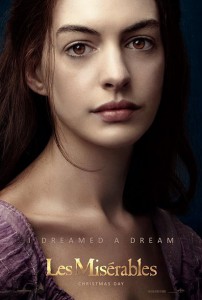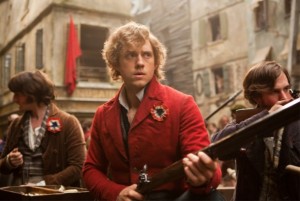 Tom Hooper has at this point proven himself a master of historical adaptations. His most famous example is “The King’s Speech,” which won multiple awards in 2010, including Best Picture and Best Director. Never before has Hooper tackled a musical, however. And never anything as huge and recognizable as that of “Les Miserables.” But Hooper has proven that, in addition to having a knack for history, he also has a keen understanding of musical numbers and sequences. Though perhaps not quite equaling the original Broadway version in some aspects, the film possesses enough brilliant segments as to be worth a viewing. For those who love musicals, “Les Miserables” is a must-see.
Tom Hooper has at this point proven himself a master of historical adaptations. His most famous example is “The King’s Speech,” which won multiple awards in 2010, including Best Picture and Best Director. Never before has Hooper tackled a musical, however. And never anything as huge and recognizable as that of “Les Miserables.” But Hooper has proven that, in addition to having a knack for history, he also has a keen understanding of musical numbers and sequences. Though perhaps not quite equaling the original Broadway version in some aspects, the film possesses enough brilliant segments as to be worth a viewing. For those who love musicals, “Les Miserables” is a must-see.
“Les Miserables” proceeds almost identically as the original Broadway play. Jean Valjean (Hugh Jackman) is finishing out a 19-year sentence as a slave for stealing a loaf of bread. In the shocking opening scene, Valjean, along with dozens of slaves strapped in chains, struggles to pull a giant ship through a watery corridor. Inspector Javert (Russell Crowe) disdainfully looks down on them, prompting the slave crew to sing the first musical sequence, “Look Down.” From this opening scene alone, the film’s intention is clear: this is not just a musical adaptation of the Broadway play, but also something much more extravagant. Not confined to the limited set constraints of the theater, the movie can and does go all out whenever possible. Using overcast skies and darkened rooms to convey a somber tone; high-sweeping camera shots; and an expert use of makeup and costume design, so as to make the characters virtually unrecognizable from one time sequence to the next; the film makes even the most extreme numbers of the play seem dull in comparison.
Though overpowering the play in terms of set design and production value, Hooper’s “Les Miserables” at times seems to falter when it comes to raw emotion and overall singing talent. When hearing a recording of the original theatrical production, the talent of the actors is felt in every moment; with every word, every accented syllable, every anguished outburst. Many sequences in the film may come close to, but still do not quite reach that same level of tear-jerking emotion. An example is the scene when Marius (Eddie Redmayne) and Cosette (Amanda Seyfried) first meet. In a Romeo and Juliet-inspired piece, they first introduce each other between a garden gate in the middle of the night, both singing the song “A Heart Full of Love” to express their thoughts. Though Redmayne and Seyfried are clearly talented singers, their voices and the sequence in general does not quite reflect the intenseness of their newly-formed emotions. Fortunately, though, the film makes up for these shortcomings with a few brilliantly orchestrated segments, which almost fully capture the grandeur of the play.

For Anne Hathaway’s role in “Les Miserables,” the already skinny actress reportedly lost 20 pounds to more suit her part. Though her scenes as Fantine are short, only lasting about 40 minutes into the film, the role stands heads and tails above the rest. Her adaptation of “I Dreamed A Dream” is mesmerizing. You can almost hear a pin drop as the audience stares on, breathless. And you will find the song in your head for hours, maybe even days afterwards. Hathaway is sure to be the front-runner for Best Supporting Actress at the Oscars this year.
Hugh Jackson is also great as the protagonist Jean Valjean. It is hard to see the stern-face Wolverine behind his character, as the part is about as different from his past roles as you can get. But Jackman did have a history in musical theater before he got more into movies, and this does shine through during some particularly warm moments of the film. Of the rest of the cast, two others stand out: the young Samantha Barks as Eponine, and Eddie Redmayne as Marius. Each character has their own distinct solo – “On My Own” by Eponine and “Empty Chairs At Empty Tables” by Marius. Each performance comes only inches away from the original Broadway play performances. It is easy to tell that these young actors have a bright future ahead of them in the film industry. As a side-note, Sacha Baron Cohen was also surprisingly fun to watch as the greedy, wild-haired Thenardier.
In the end, it is the cast and the lavish sets and costumes that make “Les Miserables” memorable. Anne Hathaway steals the show, despite the brevity of her performance. But Hugh Jackman, Samantha Barks, Eddie Redmayne, and even Russell Crowe during some moments are also well-cast in their respective roles. And some sequences, such as the final reprise of “Do You Hear the People Sing?”, are so epic that they are like nothing you would ever see at a play. Tom Hooper has proven, once again, that he can recreate another world from history through his films. And it is, at times, a fantastic world to witness.
